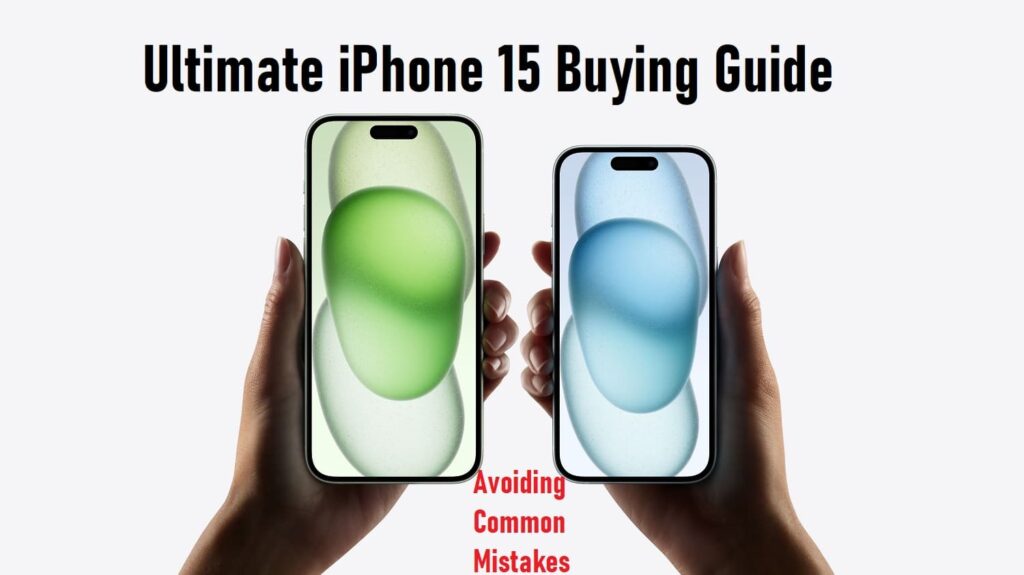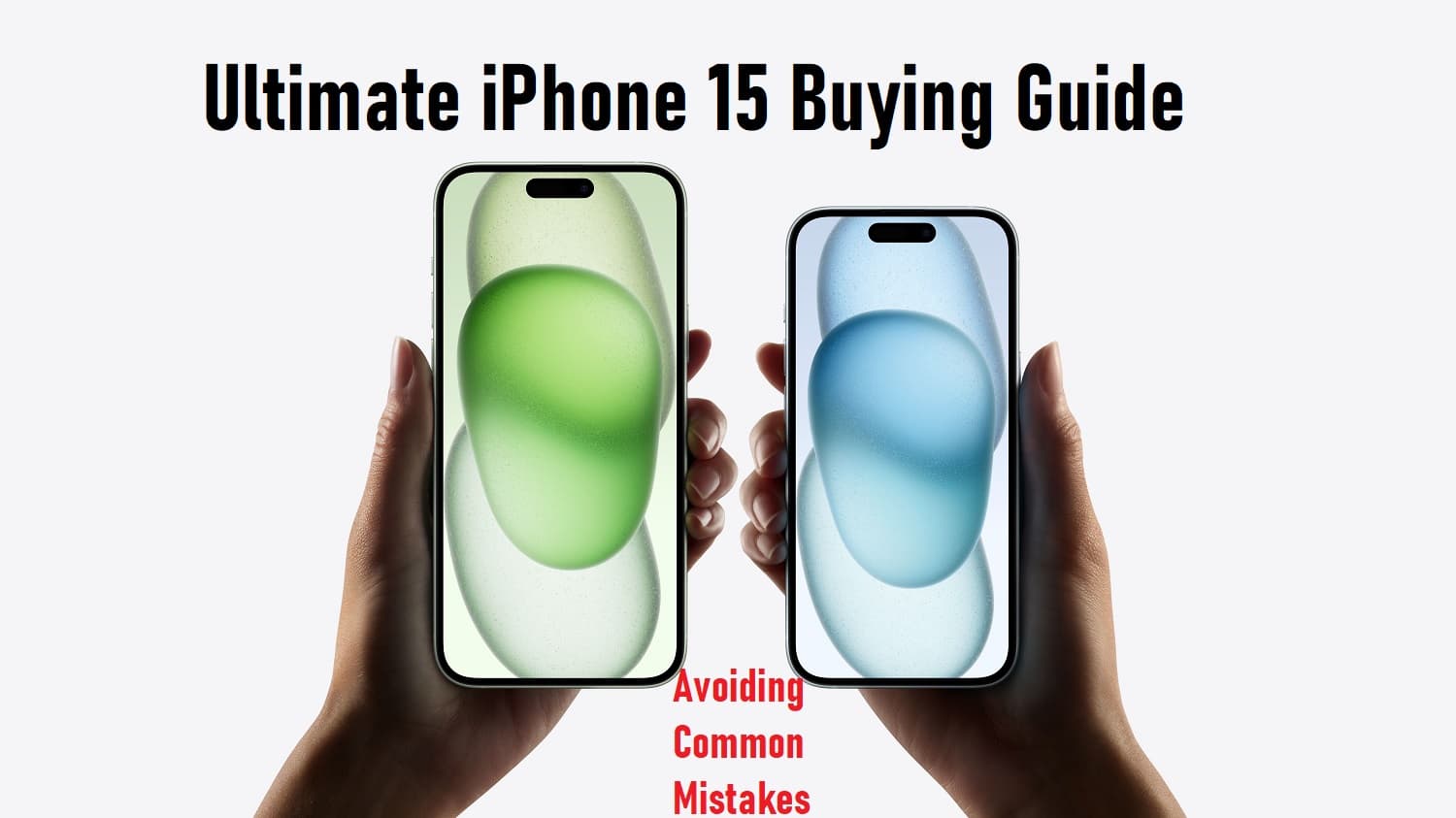Apple’s iPhone lineup has always been a source of excitement and anticipation for tech enthusiasts and smartphone users alike. With the release of the iPhone 15 series, we are once again presented with a choice between the standard models and the Pro models. In this comprehensive guide, we’ll dive deep into the similarities, differences, and the factors that can help you make an informed decision.

The Power of 120Hz: Pro Models Take the Lead
One of the most noticeable distinctions between the standard iPhone 15 models and the Pro models is the display technology. The Pro models boast a 120Hz ProMotion display, setting them apart from their standard counterparts. But what does this mean for your everyday smartphone experience?
- Smooth as Silk: The 120Hz display results in a buttery-smooth user interface. Scrolling through apps, browsing the web, and navigating your phone’s interface becomes a delightful experience. It’s like upgrading from a standard-definition TV to 4K – the difference is striking.
- Gaming Advantage: If you’re into mobile gaming, the ProMotion display is a game-changer. Games appear more fluid and responsive, providing a competitive edge. Actions become more immediate, making it ideal for fast-paced titles.
- Comparing with Android: It’s worth noting that 120Hz displays are no longer exclusive to iPhones. Many Android phones, even in lower price ranges, feature this technology. In some cases, a budget Android phone with a 120Hz display can feel smoother than a more expensive iPhone with a 60Hz screen.
The verdict? If you prioritize a seamless and fluid user experience, the Pro models, with their 120Hz ProMotion displays, are a compelling choice.
Always On: Pro Models Keep You Informed
Another significant difference lies in the Pro models’ “Always On” display feature. This innovation ensures that you can see the time and your notifications even when your phone is in sleep mode. While Android devices have had similar features for a while, Apple’s implementation comes with a twist.
- Customizable and Vibrant: Apple’s “Always On” display differs from Android by displaying your wallpaper in full color, albeit dimmed. This adds a touch of personalization to your locked screen. However, if you prefer the classic black and white always-on display, you have that option too.
- Standby Mode: A unique feature of the Pro models’ always-on display is the ability to switch to a standby mode. When your phone is charging, it can transform into a clock, a photo frame, or even a smart home control panel.
The “Always On” display is available on both standard and Pro models but is more interactive and visually appealing on the latter.
The Action Button: Pro Models Get Creative
One of the standout features of the Pro models is the introduction of the action button, which replaces the traditional mute switch. This button offers a world of customization, allowing you to assign it various functions. However, there’s a limitation to consider.
- Customization: With the action button, you can assign it to perform a specific task or launch an app of your choice. It adds a level of convenience to your smartphone interactions.
- Single Function at a Time: The current drawback is that you can only assign one function to the action button at a time. So, if you configure it to launch your camera, you won’t be able to use it to mute your phone during a call. This limitation may affect users who rely heavily on quick actions.
Material Matters: Aluminum vs. Titanium
When it comes to build materials, Apple has made a distinction between the standard iPhone 15 models and the Pro models. While both maintain Apple’s signature build quality, the choice of materials sets them apart.
- Aluminum vs. Titanium: The standard models feature an aluminum frame, providing a more matte finish. In contrast, the Pro models boast a titanium frame, which is more durable. Your choice here may come down to personal preference, as both materials exude quality.
- Lighter Weight: The standard models are also lighter than their Pro counterparts. For instance, the iPhone 15 is 16 grams lighter than the iPhone 15 Pro. This weight difference can make the standard models more comfortable to use for extended periods.
Colors: Playful vs. Professional
Apple offers a range of colors for its iPhone lineup, and this year is no exception. However, the color options differ between the standard and Pro models.
- Standard Models: The standard iPhone 15 models come in playful and vibrant colors like green, yellow, blue, pink, and classic black. These options allow for a more expressive choice that matches your style.
- Pro Models: On the other hand, the Pro models stick to a more professional color palette, including silver, black, blue, and natural titanium. If you prefer a more sophisticated and understated look, the Pro models cater to that taste.
The choice of color can be a significant factor in your decision, as it reflects your personality and preferences.
Performance Matters: A17 Pro vs. A16 Chip
Performance is a crucial consideration when choosing between the standard and Pro models. Apple equips each lineup with different chips, and this impacts both speed and capabilities.
- A17 Pro: The Pro models feature the A17 Pro chip, a powerful and advanced processor released in 2023. This chip introduces two key features: ray tracing and AAA gaming support. It opens up possibilities for playing console-level games on your smartphone.
- A16 Chip: In contrast, the standard models are equipped with the A16 chip, a capable processor from 2022. While still very fast, it lacks the specific enhancements for ray tracing and AAA gaming.
RAM: Pro Models Get More
In the world of smartphone performance, RAM plays a crucial role. More RAM allows your device to keep more apps open in the background without frequent reloads.
- Pro Models: The Pro models come with 8 gigabytes of RAM, offering ample memory for multitasking and resource-intensive applications.
- Standard Models: The standard models, while still performing well, feature 6 gigabytes of RAM. While this is more than sufficient for everyday use, it may lead to slightly more app reloading if you’re an intensive multitasker.
Storage Options: Pro Models Offer More
Storage capacity can be a deciding factor, especially if you store a lot of photos, videos, and apps on your device.
- Base Storage: Both standard and Pro models start with a base storage of 128 gigabytes, providing ample space for apps and media.
- Pro Models: The Pro models have an advantage when it comes to maximum storage capacity, offering a generous one terabyte option. This extra space can be a boon for those who capture high-resolution media or download large games.
- Standard Models: The standard models cap out at 512 gigabytes for those who require more storage than the base option.
Camera Magic: Pro Models Shine
The camera capabilities of iPhones are a significant selling point, and this year’s lineup is no different. However, there are differences between the standard and Pro models.
- Standard Models: While both standard and Pro models feature a 48-megapixel main sensor, they differ in pixel size. The standard models have a smaller sensor with two-micron pixels.
- Pro Models: In contrast, the Pro models sport a larger sensor with 2.44-micron pixels. This disparity results in better low-light performance and more pronounced background blur in photos and videos, lending a cinematic quality to your captures.
- Optical Zoom: The Pro models offer a dedicated zoom module, providing optical zoom capabilities. The standard models incorporate a 2X sensor-cropped zoom, which is still capable but falls short of the optical zoom quality of the Pro models.
- Macro Mode: Pro models introduce an autofocus-supported macro mode, perfect for capturing intricate details, such as flowers or insects.
- LiDAR and Night Mode Portraits: The Pro models are equipped with LiDAR, enhancing augmented reality experiences and improving portrait mode photography, especially in low-light conditions.
- ProRAW and ProRes: The Pro models offer advanced photography and videography capabilities with ProRAW and ProRes support. These formats provide more extensive editing options and enhanced video quality.
- 3D Video for Apple Vision Pro: If you plan on using Apple’s Vision Pro headset, the Pro models are your ticket to capturing 3D video for immersive experiences.
The camera enhancements in the Pro models cater to photography and videography enthusiasts, offering a wider range of creative possibilities.
Connectivity: Pro Models Lead the Way
Connectivity features can significantly impact your overall smartphone experience. The Pro models come with advantages in this department.
- USB-C Port: The Pro models feature a faster USB-C port with up to 10 gigabits per second transfer speeds. This is a substantial improvement over the 480 megabits per second found in the standard models. Faster transfer speeds make moving photos and videos to your computer quicker and more efficient.
- Wi-Fi 6E: Pro models support Wi-Fi 6E, offering double the speeds compared to Wi-Fi 6. However, keep in mind that you need a Wi-Fi 6E router and a fast internet connection to take full advantage of this feature.
- Thread Support: The Pro models introduce support for Thread, a communication protocol for smart home devices. Thread enables direct control of Thread-supported smart home accessories without relying on Bluetooth or Wi-Fi.
- External SSD Support: The Pro models allow you to connect an external SSD directly through the USB-C port, enabling you to record ProRes videos externally for more storage space.
- Log Mode: Pro models include the ability to shoot in log mode, a flat picture profile that simplifies color grading during video editing.
- 3D Scanning: Pro models come equipped with LiDAR technology, enabling 3D scanning and more accurate augmented reality experiences.
Battery Life: Pro Models Last Longer
Battery life is a crucial consideration for smartphone users. The Pro models offer an edge in this department.
- iPhone 15 Pro Max: The flagship of the Pro models boasts an impressive 29 hours of video playback.
- iPhone 15 Pro: The iPhone 15 Pro offers a respectable 23 hours of video playback.
- Standard Models: In comparison, the standard models provide slightly shorter battery life, with the iPhone 15 offering 20 hours and the iPhone 15 Plus delivering 26 hours of video playback.
The Budget-Friendly Alternative: Refurbished iPhone 14 Pro
If you’re working with a tighter budget, there’s a savvy alternative to consider. Apple offers certified refurbished devices, including the iPhone 14 Pro, which can provide excellent value for your money.
Here’s a quick comparison between the iPhone 14 Pro and the iPhone 15 standard models:
| Aspect | iPhone 14 Pro | iPhone 15 (Standard Models) |
|---|---|---|
| Display | 120Hz ProMotion | 120Hz (on iPhone 15 Pro) |
| Always On Display | Available | Available (similar functionality) |
| Build Material | Matte aluminum | Aluminum |
| Performance | A16 Chip | A16 Chip |
| RAM | 6GB | 6GB |
| Storage Options | Up to 1TB | Up to 512GB |
| Camera Capabilities | Excellent photography capabilities | Similar sensor but fewer enhancements |
| Connectivity | USB-C port with slower transfer speeds | USB-C port with slower transfer speeds |
| Battery Life | Varies by model | Varies by model |
While the iPhone 15 standard models offer newer hardware, the iPhone 14 Pro is no slouch, providing an excellent blend of performance, camera capabilities, and features at a lower price point. Consider refurbished options for a budget-friendly approach.
Making the Decision: Standard or Pro?
The choice between the standard and Pro models ultimately boils down to your priorities and budget. Here’s a quick summary to help you make an informed decision:
- Choose Standard If: You value a colorful and playful design, and your budget is a primary concern. The standard models offer excellent performance and camera capabilities for everyday use.
- Choose Pro If: You crave the best of what Apple has to offer, from a superior display to advanced camera features and connectivity options. The Pro models are ideal for power users, photographers, and gamers.
- Consider Refurbished If: You’re looking for a budget-friendly alternative that provides a balance between performance and features. Refurbished models like the iPhone 14 Pro offer tremendous value.
Remember that your choice should align with your specific needs, whether that’s a vibrant design, gaming prowess, or professional photography capabilities.
The battle between the standard and Pro models is fierce, and your decision ultimately comes down to what you value most in a smartphone. With Apple’s diverse lineup, there’s an iPhone for every user.















